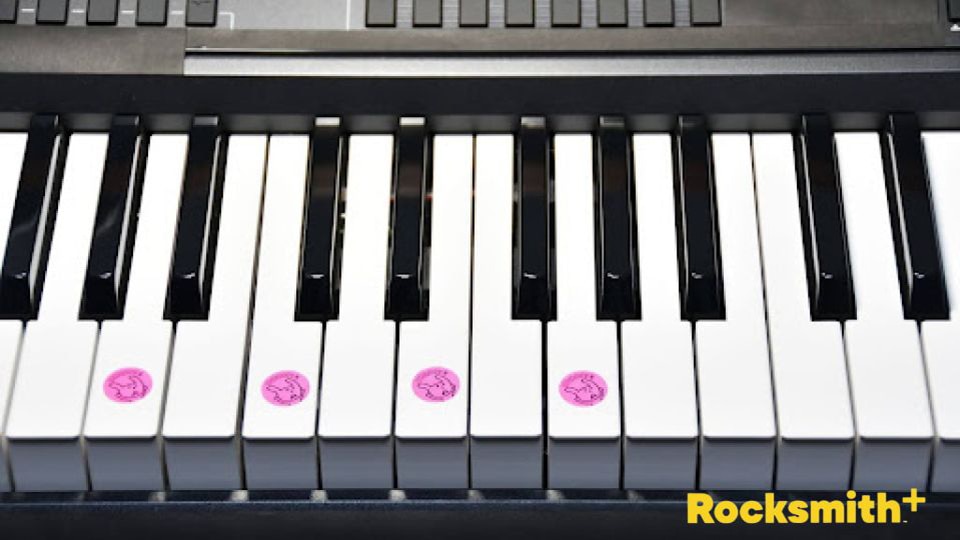Mastering the art of playing the Am7 chord on the piano is an essential skill for any budding pianist. This unique chord, a Minor 7th, is known for its mellow and soothing sound, often used in genres like jazz and blues.
The Am7 chord, short for A Minor 7th, is a minor chord with an added minor 7th note. This gives the Am7 chord its distinctive, rich sound that can add depth to your music.
Whether you're an enthusiastic beginner or a seasoned pianist looking to add a new chord to your repertoire, learning the Am7 chord can significantly enhance your musical range. By the end of this article, you'll be well on your way to confidently playing the Am7 chord on the piano.
What Are the Notes of the Am7 Chord?
![[RS+] News - How To Play an Am7 Chord on Piano - img](http://staticctf.ubisoft.com/J3yJr34U2pZ2Ieem48Dwy9uqj5PNUQTn/6pUxous4MGSxwvh0HTw2h1/eb50a62ee04fa376814c2c4e8d9527c3/amin7notes.jpeg)
An Am7 chord, or A Minor 7th, is built of four specific notes: A, C, E, and G.
The Am7 chord is made up of the A minor chord (A-C-E) plus a minor 7th above the root. Minor 7 is 10 half steps up from A.
The beauty of the Am7 chord is that it is comprised entirely of white keys. This makes it a fantastic starting point for beginners, as there are no sharps (#) or flats (♭) to worry about. All you need to do is locate these four notes on your keyboard, and you're well on your way to mastering the Am7 chord.
How To Play Am7 With Your Right Hand
![[RS+] News - How To Play an Am7 Chord on Piano - img 2](http://staticctf.ubisoft.com/J3yJr34U2pZ2Ieem48Dwy9uqj5PNUQTn/24llh1Url6EGsPZOOT1mr1/618149f82cbab730078db9ae767f8283/amin7right.png)
Now that we've covered the basics and the notes that comprise the Am7 chord, let's focus on how to play the Am7 with your right hand.
Place your thumb, or your 1st finger, on the A key. Make sure your fingers are naturally aligned with the subsequent white keys. Your fingers should be gently curved, like holding a small ball, not flat against the keys.
Your finger position for the Am7 chord should be as follows:
-
Your thumb (1st finger) will be on A.
-
Your index finger (2nd finger) should lightly be placed on C.
-
Skip the D key and place your middle finger (3rd finger) on E.
-
Your pinky (5th finger) should be on G.
With this positioning, you are able to play the Am7 chord with your right hand. Practice pressing the keys simultaneously to hear the harmonious sound of the Am7 chord.
Just like learning any new skill, practice, and patience are key.
How To Play Am7 With Your Left Hand
![[RS+] News - How To Play an Am7 Chord on Piano - img 2 - img3](http://staticctf.ubisoft.com/J3yJr34U2pZ2Ieem48Dwy9uqj5PNUQTn/70QypkGn3HCdHMaldbxpdV/9104efaa41de830795431a4fcbad25b3/amin7left.png)
Mastering the Am7 chord with your left hand is an essential step to becoming a proficient pianist. Let's break down the steps to playing the Am7 chord with your left hand.
Begin by placing your pinky, or the 5th finger, on the A note below Middle C. Your middle finger, or the 3rd finger, should rest on the C note. The index finger, or 2nd finger, lands on E, while the thumb finger, or 1st finger, presses G.
Here is the finger placement guide:
-
Pinky (5th finger) on A.
-
Middle finger (3rd finger) on C.
-
Index finger (2nd finger) on E.
-
Thumb finger (1st finger) on G.
Left-handed learners might find this exercise easier, but right-handed pianists shouldn't worry. Like any other skill, playing with the left hand requires time, practice, and patience. It may feel unnatural at first, but with consistent practice, you'll find your left-hand agility improving.
Once you're comfortable playing the Am7 chord with both hands separately, try playing with both hands simultaneously. This may seem challenging initially, but it's a vital step in mastering the piano. Start by playing the A note with both hands together, then move step-by-step to the other notes of the Am7 chord. In other words, start by playing A, then play C, press E, then finish up playing the G.
Remember, speed is not the goal here. Focus on coordination and precision. The more you practice, the more natural playing the Am7 chord will feel. Keep practicing, and soon, you'll be playing the Am7 chord with both hands effortlessly, making it a part of your muscle memory.
Now that we've covered playing the Am7 chord with your left hand, let's move on to talking about some practice tips that can help you perfect the Am7 chord.
What Are Some Practice Tips for Learning the Am7 Chord?
![[RS+] News - How To Play an Am7 Chord on Piano - img 2 - img4](http://staticctf.ubisoft.com/J3yJr34U2pZ2Ieem48Dwy9uqj5PNUQTn/6CiXXUeO1CPam3QVegvXx3/f47709916811d02c34a55ec744e986cc/amin7end.jpeg)
We've learned the specifics of the Am7 chord and how to play it with both hands, so let's discuss some tips that can help you make the most of your practice sessions and master this minor seventh chord.
First, it's in your best interest to make daily practice part of your routine. Even a 15-minute session every day can play a key role in making significant progress --- consistent, routine practice not only sharpens your skill but also enhances your muscle memory, making the motions of playing Am7 on the piano more natural over time.
It can also be helpful to consider using a metronome, which can help you maintain a steady tempo while playing. Start slow, and as you become more comfortable with the Am7 chord, gradually increase the speed.
If you're having difficulty with the Am7 chord, another helpful tip is to break it down into more easily digestible pieces. Focus on playing each individual note separately until they become more familiar. Tools Rocksmith+ can be especially valuable here, allowing you to play specific sections at your own pace while tracking your accuracy.
Remember to stay relaxed when playing the piano. Tension in your hands or shoulders can limit your range of motion and cause discomfort. Check out the Posture and Technique lesson video in Rocksmith+ to learn more about maintaining proper form while playing.
Lastly, set small, achievable goals for each practice session. Instead of trying to learn everything at once, focus on mastering one aspect at a time. You might start with the Am7 chord, then move on to transitioning smoothly between Am7 and other chords.
Learning to play Am7 on piano is a journey, not a race. Take your time and enjoy making beautiful music along the way.
The Bottom Line
With the Am7 chord, your hands have gotten a taste of playing together, an essential skill for any pianist. The experience of playing the Am7 chord with your left and right hands separately and then together has prepared you for the synchronous harmony that playing the piano demands.
The world of piano playing is expansive, and the Am7 chord is just one of many steps you'll take on this journey. Dive into the next chapter of your musical adventure with Rocksmith+.
Sources:
What Is The Root Of A Chord? | Hello Music Theory
Difference Between a Sharp and Flat Note | Prodigies
Middle C | Music Theory Academy
proper uses of minor seventh chords | Music: Practice & Theory Stack Exchange









